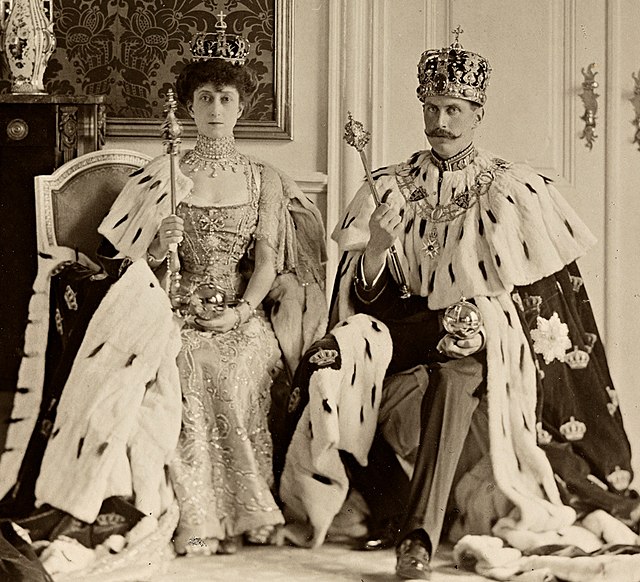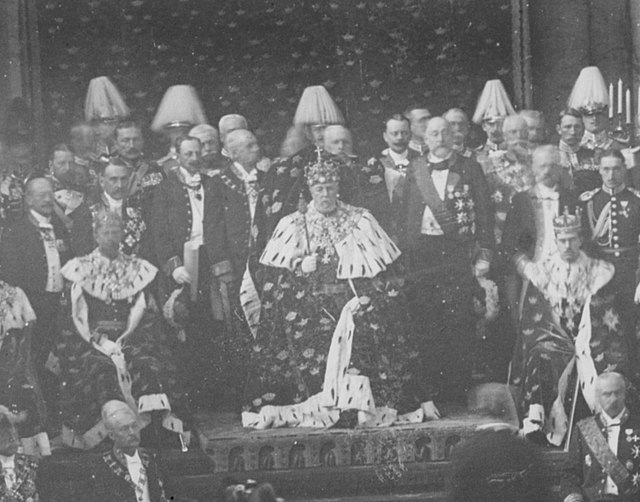Sweden's regalia are kept deep in the vaults of the Royal Treasury, underneath the Royal Palace in Stockholm, in a museum that is open to the public. The crowns and coronets have not been worn by Swedish royalty since 1907, but they are still displayed at weddings, christenings and funerals.
The Crown, Sceptre, Key and Orb of the King of Sweden as displayed in the Royal Treasury (2014).
The crown and coronets being worn during the opening of the Riksdag 1905
The Crown of Eric XIV, as it appeared before a later 20th century restoration to its original 16th century appearance.
Crown used by Queen Christina, made for her mother.
Regalia is the set of emblems, symbols, or paraphernalia indicative of royal status, as well as rights, prerogatives and privileges enjoyed by a sovereign, regardless of title. The word originally referred to the elaborate formal dress and accessories of a sovereign, but now it also refers to any type of elaborate formal dress. The word stems from the Latin substantivation of the adjective regalis, "regal", itself from rex, "king". It is sometimes used in the singular, regale.
Queen Elizabeth II with her regalia
King Haakon VII and Queen Maud of Norway with their regalia in 1906
King Oscar II of Sweden, his crown prince Gustaf (V) and grandson Gustaf (VI) Adolf in their crowns and coronets on a state occasion about 1900.
Emperor Pedro II of Brazil wearing elements of the Imperial Regalia. Detail from a 1872 portrait by Pedro Américo.








